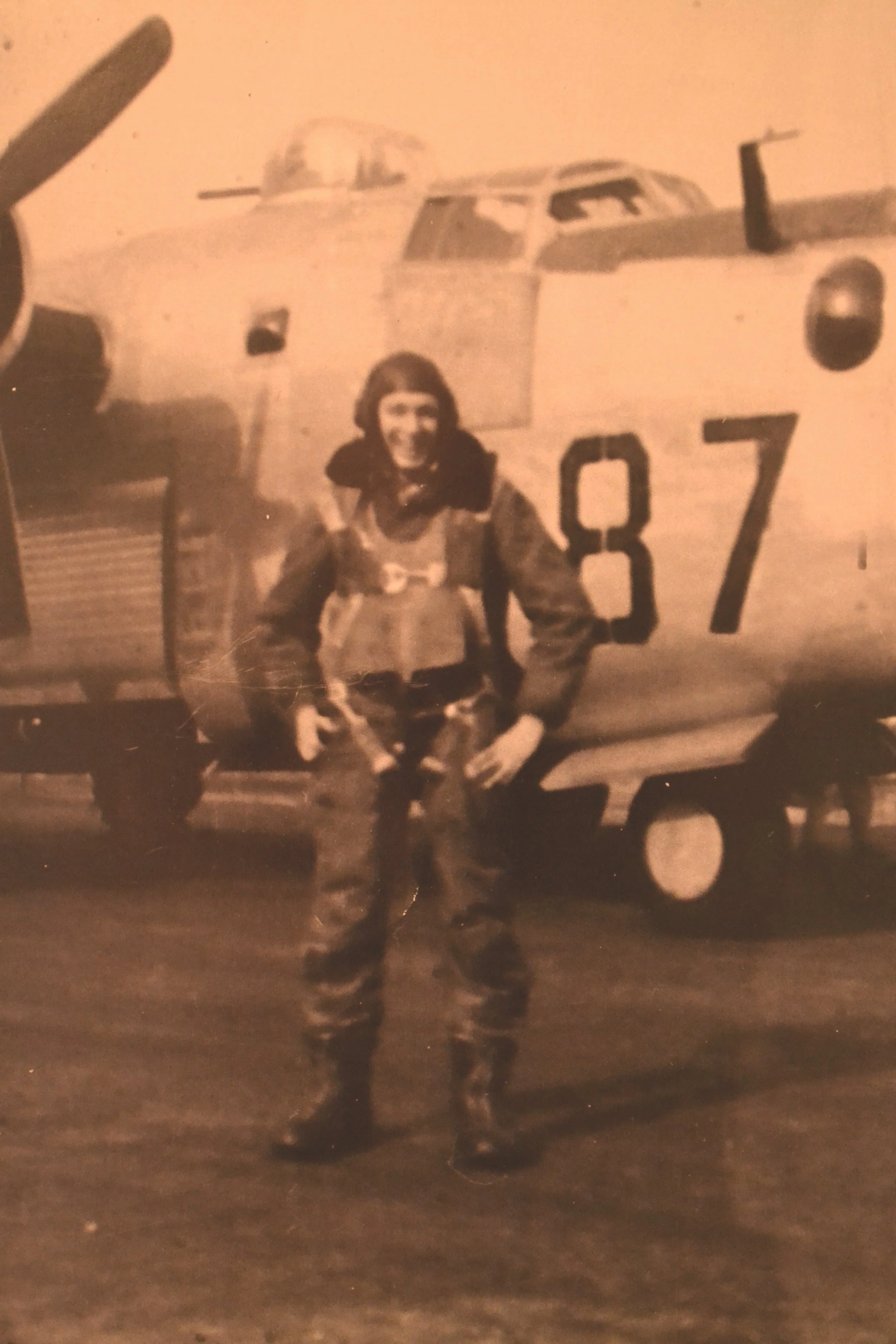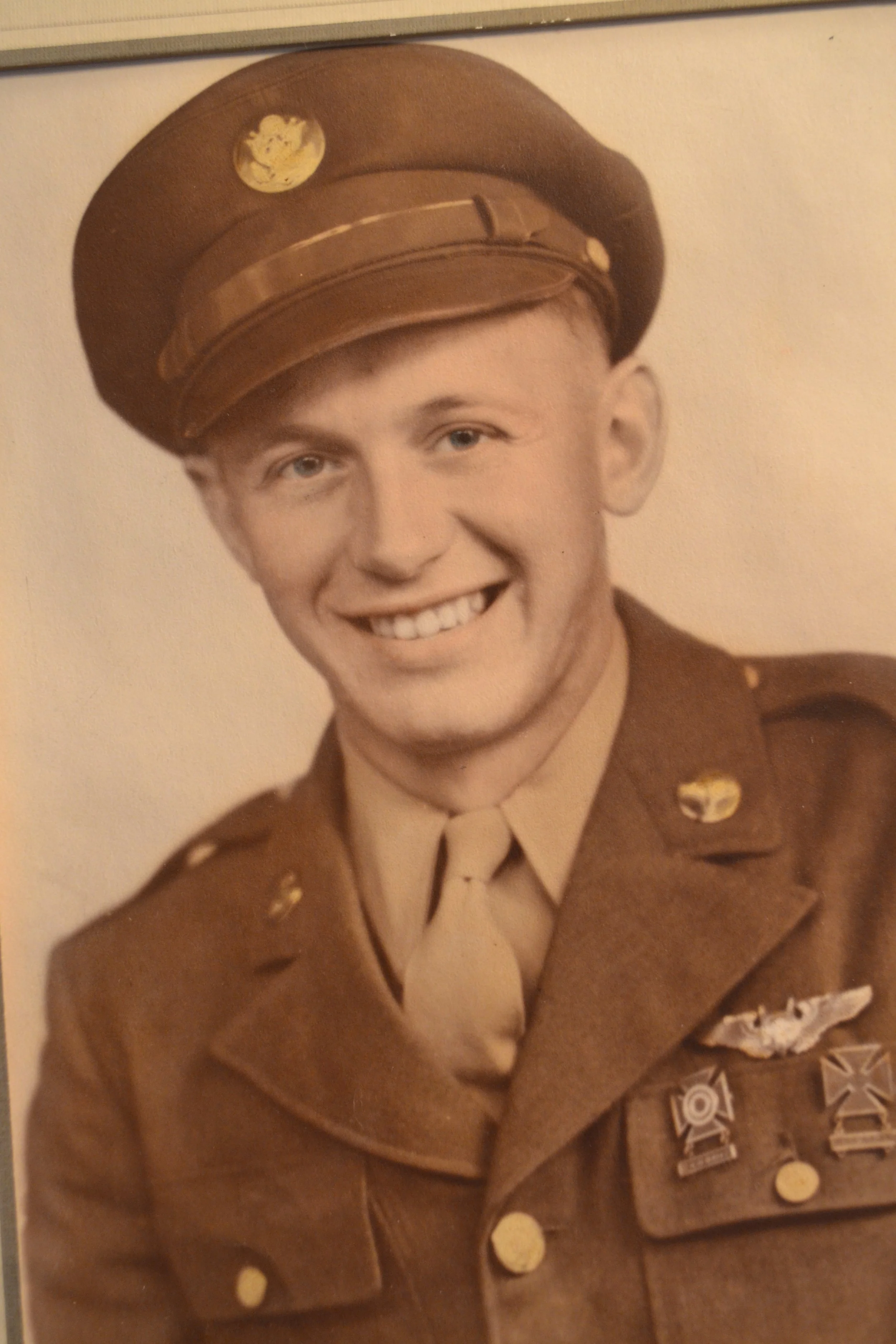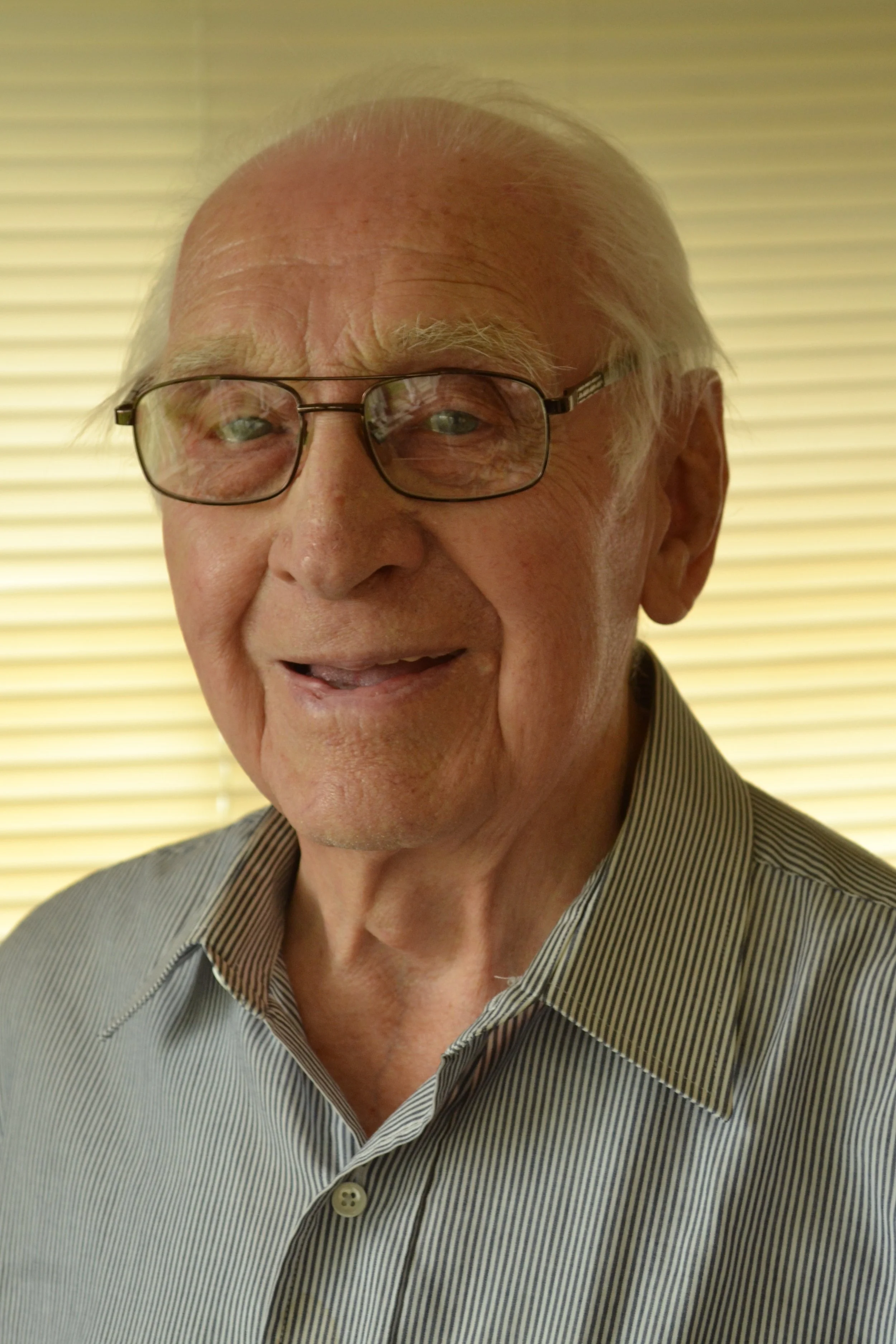
Tale of a Tail Gunner
“NO, we already have two sons fighting in this war!” That was Joseph Enrietti’s mother’s reply when Joe’s dad showed her the papers she had to sign to allow her 17 year old son to join the Army Air Force in 1943. In the Keweenaw, Joe was one of many from this sparsely populated part of the U.P. of Michigan, who answered the call to defend their country. Today, Joe Enrietti is 99 years old and the last living WWII veteran in Keweenaw Co. His story is a testimony to the “Greatest Generation” who went to war because as Joe puts it, “We were fighting two wars at once you know.”
In 1943, at an assembly at Calumet High School, Joe talked to an Army Air Force lieutenant pilot, and set his sights on flying. The lieutenant tested those interested and Joe scored high, which led to an invite to go to Madison, Wis. for more testing. Joe was now a cadet. Joe graduated from high school in January of 1944. Elmer, at the local draft office, classed Joe, 1A and gave him orders to go to Marquette for his physical.
When he arrived with a bus load of other guys, Joe was separated and given new orders to get on a train to Fort Sheridan, Ill. that night. Joe said, “ I can’t go, I only have $5 in my wallet.” The sergeant said, “From now on you don’t ask questions you just say, ‘Yes sir’.” Joe told a cousin in the group, “Tell your dad to tell my mom, I am not coming home.”
From Ft. Sheppard, Joe was sent to Wichita Falls,Texas where he learned that without some college he could not be a pilot, so they put him in tower operator training in Scottsdale, Ill. There he learned Morse code and became proficient in turning conversation into code instantly on a code typewriter.
“I still wanted to fly and heard they were looking for tail gunners on B-24s,” Joe explains, “so I volunteered.” This assignment took him to Kendall Field, Fla. There they tested him by having him shoot skeet. He did well and went on to learn how to operate a turret and sight two 50 caliber guns, calculating the sight curve that an incoming fighter plane would attack from. He then learned that the tail gun in a B-24 was the first one the attackers wanted to eliminate because it made the plane more vulnerable for them.
Soon Joe was practicing with real bullets in Apalachicola, Fla., shooting at a target towed by a small plane over the Gulf of Mexico. When training was complete, Joe graduated and was pinned by a Colonel’s wife. “I was given two silver wing pins, one for my uniform and one for the one you loved the most. I gave mine to my mother. I then received orders for a base in California and a 30 day furlough.”
“They paid me in cash and ticketed me to Calumet and San Francisco and I took a train home. In Calumet, my parents met me and after hugging my mom she gave me a slap and said, ‘Don’t you ever do that again to me’.” Everyone had come back from Marquette after their physical, except for Cadet Enrietti who had been sent to Illinois. His mom had worried for days waiting for that first letter from Joe.
In California, crews were put together and they flew missions over the Pacific. They practiced bombing the Rose Bowl, Golden Gate Bridge and Hoover Dam with cameras instead of bombs. Gunners also practiced shooting pictures at diving P-51s. Joe was then graded from the pictures.
On return from one of these practice missions, Joe’s crew were told to practice some landings in a cross wind. On approach the plane crabbed into the wind and crashed. The tail of the plane, with Joe in it, broke off and he was trapped. Knowing Morse code, Joe tapped out his communicator ...--- SOS TAIL. When he was finally rescued and taken to the hospital he found out he was the only survivor of the ten man crew.
Joe went on to train tail gunners for the newest bomber, the B-29, before joining a crew headed for England. Joe explains, “Our mission was to bomb Germany. We had bomb bay tanks for extra fuel. It was a long cold flight. We wore sheepskin insulated flight suits and above ten thousand feet altitude we were on oxygen.” They would be attacked so fiercely that Joe’s guns would overheat and he would have to change the barrels. This required him to have his hands outside the turret in the extreme cold. He wore heated mittens, but unable to see, he would change the barrel by feel only.
Joe flew fourteen bombing missions over Germany. On June 9, 1945, his squadron was ordered to “take the planes home.” They loaded their ground crew and other passengers and flew from Wales, England to the Azores, across the Atlantic to Bradley Field near Washington DC. There the crew broke up and Joe went to Las Vegas, Nev. to B-29 training school. Soon after, Joe says, “Harry Truman dropped the bomb on Japan and the war was over.” His squadron was put in mothballs at Sheppard Field in Wichita Falls, Texas where Joe spent the rest of his enlistment as the mess sergeant at the base dining hall.
Staff Sergeant Joseph A Enrietti, a great witness for the Greatest Generation in the Keweenaw, was awarded for his service, the Aerial Gunner Badge, the AirCrew Member Badge, the Good Conduct Medal, the American Campaign Medal, the, European African Middle Eastern Campaign Medal with one Bronze Star and the World War II Victory Medal.
Today Joe lives in Mohawk, drives to his Rotary meetings weekly, takes a cruise up the peninsula to Eagle River, and visits the ladies at the Keweenaw court house. He is honored often on the 4th of July or by dropping the first puck at a hockey game and local veterans regularly salute Joe at the grocery store or on the street.



